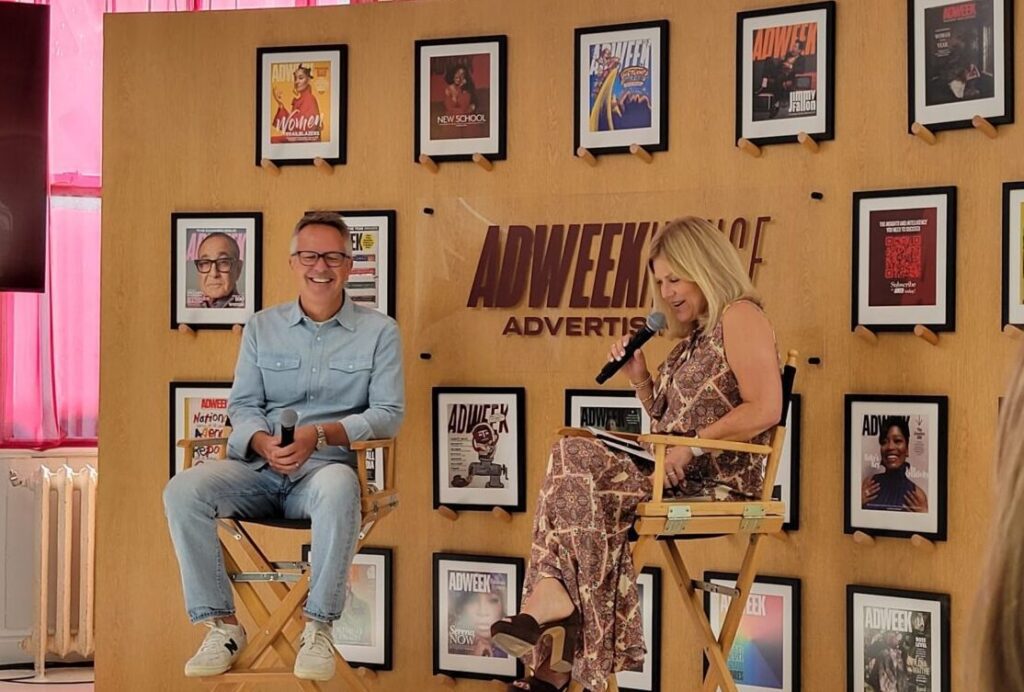If the new business model requires that firms overhaul themselves to offer individualized service, Royal P. Farros has an advantage: He started out that way. IPrint.com, the e-commerce enterprise he founded three years ago, generated $2.2 billion in gross revenue for the fiscal year that ended in June, all by offering self-service printing.
IPrint serves the SOHO and consumer markets, allowing online customers to design business cards, envelopes, letterhead and other personalized items. The orders are automatically routed to a half-dozen manufacturer/partners based on job specs and ZIP code.
The Redwood, CA-based firm draws over 40,000 unique visitors to its site every day, and has 110 employees and some heavyweight partners – including Kinko’s, Lycos and Excite – and investors such as Information Technology Ventures and Intel Corp.
“IPrint is redefining the relationship between the printer and its customers, making the most popular printing transactions self-service.” says Farros. This requires a strong back-end operation and the ability to interact with customers and partners.
For iPrint customers, the sell is 24-hour convenience and customization as well as the ability to get short runs on items such as personalized Post-it notes. Using supplied templates, iPrint’s customers can select fonts, insert clip art images, fiddle with design elements, add text, and even download images and logos for placement on customized stationery, golf balls and holiday cards. All orders are stored online for convenient reorder, and work in progress is stored for two weeks before an e-mail reminder is sent to prospects.
All applications rest on iPrint’s servers, which are currently running on an NT platform but will soon be moving to Linux.
For Farros, the back end has been a challenge. “The depth of pricing goes so far beyond any other e-commerce site that we had no choice other than to create our own software,” he says. “Consider the factors that go into one simple business card purchase: the number of colors, the type of paper stock, whether the card bleeds, flat ink or raised ink, quantity, delivery…”
Elizabeth Epps, who runs a temporary personnel business – Coastal Staffing Service – from her home in Raleigh, NC, has spent $1,000 on letterhead, business cards and other supplies with iPrint in the past year. Pricing and turnaround are comparable to those of her neighborhood printer. “I like iPrint because I can do it when I have time to do it, instead of having to make time to do it,” she says. “I also like to play around with the fonts.” Any downsides? Yes – the slowdowns on the site during high-traffic periods and the shipping costs. “However, driving across Raleigh to pick up an order offsets the shipping costs,” she admits.
The sophistication of the iPrint back-end operation has worked in the company’s favor, both in terms of making barriers of entry high and allowing iPrint to develop unique relationships and sell its iKiosk (www.iKiosk.com) private-label technology. The company just landed a deal to fulfill Kinko’s online storefront (www.customprinting.kinkos.com) that was launched in August. Whether this site will take away from Kinko’s existing business is unknown. “We want to offer the most convenient way to service our customers,” says Kinko’s spokesperson Laura McCormick.
iPrint has a small number of competitors online. “There are others emerging, but how scalable they will be is the question,” says Cary Sherburne, director of document outsourcing consulting services at CAP Ventures. “It’s one thing to process a few hundred orders, but a few thousand is something altogether different.”
One competitor is easiest.com, which caters to the same markets as iPrint. Founded in 1997 and based outside Minneapolis, easiest.com also runs another print service, On-line Data Transfer (ODT), through which large corporate customers order stationery products. Corporate Graphics International, a sister company and the back-end printer for easiest.com and ODT, has had a relationship with UPS for more than 13 years, providing all of UPS’s business stationery needs. “What sets us apart in the marketplace on the consumer and business sites is that we control both the front end and back end of the process,” says Ellen Steck, vice president of new business development at easiest.com.
Do these customized online print shops pose a threat to traditional small or “quick” printers? “When quick printers started, they lived for letterhead and business card orders,” says Nancy DeDiemar, president of Printing Resources of Southern California, and past president of Print Image America. “But many of us have stepped up to become almost mini-ad agencies for our top clients – providing small business services including design, mailing and fulfillment. As a printer, I’m thrilled because I believe these sites effectively expand the marketplace, providing a resource for those who require very small quantities and may only have a few dollars to spend for an entire business package.”
DeDiemar’s contention that online services are not yet a threat to small printers is supported by research done by Crouser & Associates, Charleston, WV. Crouser found that 50% to 75% of a quick printer’s total business comes from approximately 25 accounts. IPrint, which has an average order size of only $68, may in effect be expanding the custom-print marketplace. “It’s too early to tell what impact e-commerce will have on more traditional buying channels in graphic arts,” notes Joe Webb, partner at Trendwatch, a Rhode Island consultancy that analyzes print industry trends. “The printing sites that are appearing tackle fairly standard template-based items such as business cards and stationery.”
Farros, meanwhile, is looking for more strategic partnerships, especially with large companies that already own B-to-B markets. “I’d like to become the Visa of the printing world.”
 Network
Network

